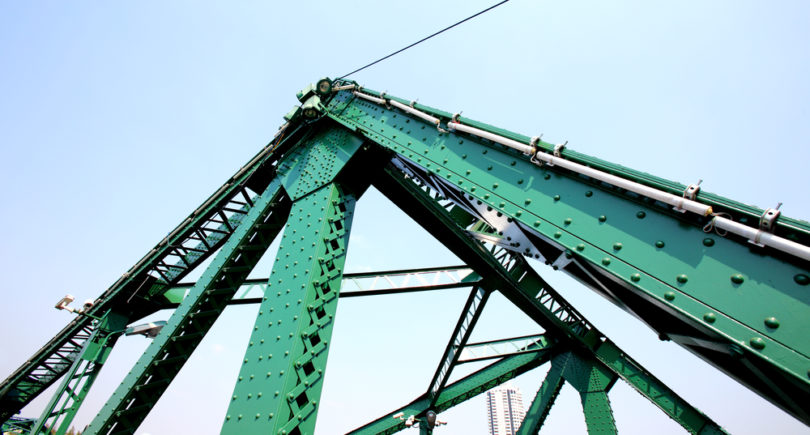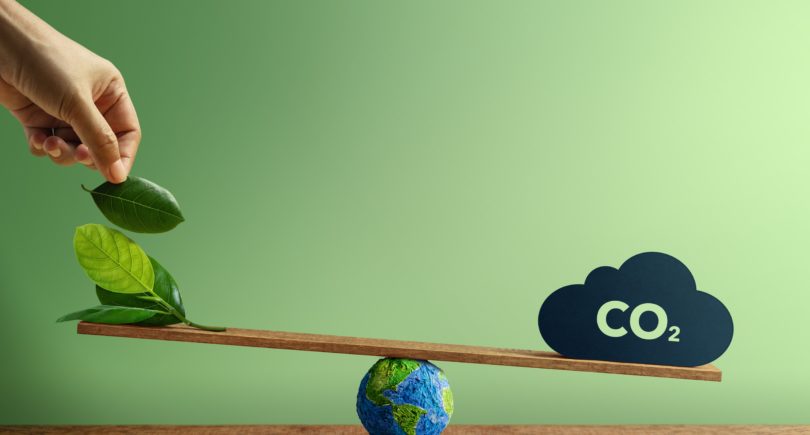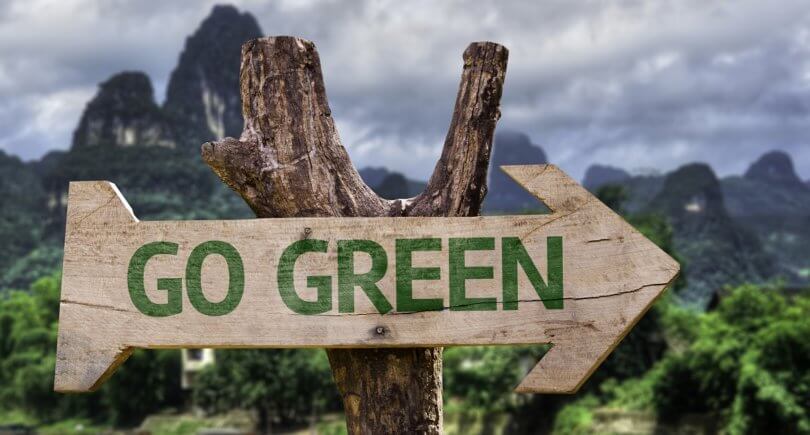
Posts Green steel Ferrexpo 356 25 June 2021
Companies of the mining and metallurgical complex spent UAH 18.6 billion for environmental purposes last year
Every year, environmental investments are becoming an increasingly important area of investment for Ukrainian mining and metallurgical companies. There are two main reasons for this: the need to reduce the technogenic load on the environment and the tightening of requirements for compliance with environmental standards in the world.
Costs of metallurgical and iron ore enterprises of Ukraine for environmental protection in 2020 grew up by 16.3% compared to 2019 – up to UAH 18.6 billion. In particular, the costs of iron ore enterprises for environmental protection in 2020 increased by 22.9%, to UAH 10.8 billion, and steel enterprises, by 7.1%, to UAH 7.8 billion.
The share of investments of mining and metallurgical enterprises in environmental activities in the structure of expenses of all business entities in Ukraine has reached 45%. At the same time, in general, in the domestic economy, environmental protection expenditures decreased by 9.3% to $1.5 billion.
The structure of expenses of GMK enterprises for environmental protection differs significantly:
- iron ore mining: operating expenses – 66.3%, capital investments – 33.7%;
- metallurgy: operating expenses – 43%, capital investments – 57%.
The specificity of eco-investments in the GMK is that they can be directed at the same time to the environmental effect (reducing emissions, saving resources, etc.) and improving production performance. It is also important to take into account that any environmental projects in the GMK are very capital-intensive and time-consuming to implement.
Expenses of GMK enterprises for environmental protection in 2018-2020, UAH bln
| 2018 | 2019 | 2020 | |
|---|---|---|---|
| Добыча металлических руд | 7.3 | 8.8 | 10.8 |
| Металлургия | 6 | 7.3 | 7.8 |
Data source: State Statistics Service
Private costs
Given the imminent introduction of a carbon tax by the European Union (Carbon Border Adjustment – CBAM ) and the general strategy of “greening” the global industry, environmental investments by GMK companies are becoming a priority among priorities.
Metinvest
Last year, Metinvest’s environmental investments rose by 32% to $204 million amid a 37% decline in total capex. The key areas of the company’s eco-investments are projects at Mariupol Metal Plant named after Ilyich: reconstruction of the sinter plant and facilities for blast furnaces No. 3-5.
This year, Azovstal plans to start the reconstruction of oxygen converters No. 1, 2, during which the gas cleaning equipment will switch from a wet system to a dry one, as well as to replace the gas cleaning facilities of the roasting machine at Northern Mining and Processing Plant. Along with this, the reconstruction of facilities at blast furnaces No. 4, 5 of MMKI has begun.
According to the CEO of Metinvest Yuri Ryzhenkov, this year the company’s eco-investments will amount to about $148 million. In total, the company plans to allocate about $500 million for these purposes in the next five years.
In the future, Metinvest is considering the possibility of building a single complex consisting of direct iron reduction technology and electrometallurgical production in Mariupol or Zaporozhye, as well as environmentally friendly blast furnaces at MMPI with their conversion to DR pellets.
ArcelorMittal Krivoy Rog
Last year, the company more than tripled its eco-investment to UAH 1.6 billion. In particular, in 2020, the reconstruction of sinter shop No. 2 continued to reduce dust emissions. Modernization of sinter production is a priority task, since the share of these production facilities in total emissions is about 75%. The key environmental project is the reconstruction of gas cleaning equipment for sintering machines. Today five of the six sintering machines of the shop have already been modernized: No. 1, 2, 4, 5, 6. Each one with the introduction of a modern gas cleaning, aspiration and automation system.
After reconstruction, new gas-cleaning equipment and electrostatic precipitators manufactured in Italy and Denmark were installed on four sintering machines of sinter shop No. 2. Also installed are new incendiary forges with an energy-efficient ignition system, which reduces the consumption of natural gas. As a result of the renovation of the second sinter plant, dust emissions from each of the six sintering machines will be reduced by 250 tons per year. The total cost of the project for the reconstruction of sinter shop No. 2 is over S180 million.
The company’s expenses for repairs of environmental equipment amounted to UAH 197.4 million in 2020. Among the main projects are the restoration and maintenance of aspiration and technical installations, pipelines and slurry pipelines of the crushing plant of the mining department, the repair of slurry pipelines and the cleaning of sludge collectors of the sludge facilities of ore processing plants, as well as the repair of technological gas treatment plants of the steam-gas shop.
This year, ArcelorMittal Kryvyi Rih plans to reconstruct the gas cleaning equipment of sinter machine No. 3 of sinter shop No. 2, as well as reconstruct its tailings. Design work continues on the reconstruction of blast furnace No. 9 and gas cleaning equipment for converters No. 1-3 of the converter shop, as well as the construction of a new pelletizing plant.
In the next 3-4 years, the company is implementing major investment projects, including $700 million for environmental activities, which are an integral part of major investment projects, such as the construction of a new pelletizing plant.
Ferrexpo
Ferrexpo’s environmental investments in 2020 amounted to $17 million. In particular, a dust suppression vehicle was purchased for the sludge management shop and engineering and design work was carried out to aspirate the production sites of Poltava MMP.
The budget for environmental projects in 2021 provides for the introduction of aspiration plants and an emission monitoring system in the amount of more than UAH 15 million. In general, the five-year program of the company’s projects for 2021-2025 involves investments in the amount of more than UAH 280 million.
This program includes three areas (they do not take into account decarbonization projects):
- Improvement system – implementation of projects on water resources management, biodiversity;
- Emissions management system – design and reconstruction of existing aspiration plants at production sites;
- Waste management system – analysis of accumulation with provision of a full life cycle, implementation of standards for handling hazardous waste.
The implementation of these projects will reduce the amount of pollutant emissions by more than 20% and increase the share of treated waste by 12%.
The realities of green investment
Ukrainian metallurgical capacities are quite far from modern standards, and eco-modernization usually requires more time and effort due to extremely outdated equipment and the fact that any changes entail the need to work in other areas of production and even temporarily stop processes.
In the light of the global trend towards decarbonization, the environmental costs of GMK terprises will only grow. The price of the issue is not exactly known, but it is a multi-billion sum.
“We all see the huge risks of introducing the Carbon Order Adjustment Mechanism (CBAM) for the Ukrainian economy. In addition to direct losses, there are also risks of chronic underfunding. Over the next 10 years, Ukrainian enterprises will face an enormous financial burden in connection with the implementation of European environmental directives, the introduction of BAT (best available technologies and management practices), the ambitious goals of the Second Nationally Determined Contribution (NDC-2), the responsibility of the producer within the scope of circulation with waste. To meet these requirements, metallurgists will need $5-10 billion,” – earlier pointed out Alexander Kalenkov, President of “Ukrmetallurgprom” .
No matter how much Ukrainian steel companies invest in eco-modernization, they will not have enough of their own funds even with the best conditions on the steel and ore markets. For example, European steelmakers can count on subsidies in the billions. According to the EUROFER association, the transition to carbon-free technologies for European steelmakers alone will cost €144 billion by 2050. At the same time, for obvious reasons, Ukraine is very limited in the possibilities of state support for eco-modernization.
Moreover, the authorities seek to tighten environmental legislation. Draft Law No. 5600 proposes to raise a number of eco-tax rates. According to GMK Center analysts, the MMC’s expenses from the increase in the eco-tax grow up for UAH 934 mln. This is the logic of the series of increasing the return on the cow by “feed less, milk more”, which will definitely not positively affect the industry.





